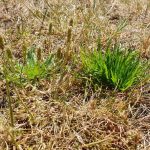
4. A dry May
16 May 2025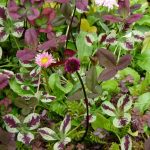
6. White lawn clover – more than it appears.
29 June 2025For those of us on very sandy soil and no rain for the last four weeks or so, the lawn has become brown and crispy underfoot very early this year. The grasses have succumbed and become dormant, or in some cases simply died. The driest Spring since 1976, maybe even 1857, is a distinct possibility some say.
1976 for those too youthful to remember, included the summer of the Great Drought. Widespread water shortages across the UK, almost empty reservoirs, stand pipes in streets, bricks in toilet cisterns and weeks of sun, sun, sun. Followed by rain, rain, rain. Ah, the 70’s!
I had noticed back then how the lawn weeds were the only plants that survived the drought. It was the year I first contemplated the question “Why do lawns have to be grass?”
Here on sandy coastal soil, similar circumstances have occurred once again, the grassy lawns have crisped once again. and lo, once again only the so-called weeds show green.
To my mind this is yet further evidence that lawns would benefit from a bit of timely horticultural evolution. The evidence appears to be glaringly obvious and consistently adding up, but nevertheless remains perplexingly and quite remarkably ignored by garden horticulture as a whole. Thank goodness for Monty Don’s ‘shaggy lawn’ at RHS Chelsea this year. It is a start.
A bit of tailored lawn gardening could see British lawns become more climate resilient, may in the process open a whole new avenue for domestic gardening, and include all the economic and biodiversity benefits that could come with gardening the single most common horticultural feature in British gardens. Grass really is not the only option.
So, here is a look at the local lawn survivors. Evidence behind my words. They are almost all forbs.
Surprisingly perhaps, the common daisy clings on where it has developed into relatively large water-retentive stoloniferous patches. Smaller patches with less developed stolons and single plants have not fared nearly so well. Bigger is better in this case. A month with no water and still flowering. 13 invertebrate species are known to rely on it and many other pollinating species will visit it.
Not a native, although naturalised (its native range is still mysterious), a red-leaved form of creeping wood sorrel (Oxalis corniculata) is managing in a semi-shaded spot in this dry lawn. Its survival here seems dependent on the dappled shade a nearby tree provides in the middle of the day, since beyond it the oxalis has succumbed and shrivelled. Its red/purple leaves are part of a defence against environmental extremes, since amongst other things the pigment helps protect it from UV light. Its capacity to droop its leaves and reduce surface area also helps reduce water loss.
Not yet in flower (from June onwards), and more usually thought of as a rather tall meadow plant, lady’s bedstraw (Galium verum) can adapt its height to the local vegetation. This crispy lawn has barely any height to it and the bedstraw is creeping through the desiccated grass. This year it is not in any rush to grow. Amazingly, it is associated with 60 species of invertebrates. I want some in my lawn.
Surviving quite happily, although currently growing very slowly indeed and yet to flower, common restharrow (Ononis spinosa subsp. procurrens) has woody rhizomes, small hairy leaves and quite pleasant-smelling leaf oils that help it survive dry conditions. It is a legume and its relationship with soil bacteria means it creates its own natural nitrogen fertiliser. There is a spiny, upright form (Ononis spinosa) that rarely does well in lawns. Spines in the lawn, not being a popular feature.
Cat’s-ear (Hypochaeris radicata) and its related hawkbits seem to shrug off the drought and many are in flower, although not in this lawn. They have relatively thick leaves that have waxes and trichomes that stave off dehydration, and similar to dandelions their roots are especially good at scavenging water in the soil profile, although they have a different overall structure. Unsurprisingly dandelions are also managing to survive remarkably well.
Cinquefoil (Potentilla reptans) with its five leaflets, showing a bit of reddish colour change as protective pigments come into leaves and petioles (leaf stems). A plant that is another ground-creeping plant with deep roots and stolons that share water between the parent and daughter plantlets. It is a plant that prefers sunny places and will attempt to creep out of shade. The further north you travel the less likely you are to see it as its is a plant that likes sun and warmth. Not many flowers, but hoverflies seem particularly drawn to the ones that do appear.
White clover (Trifolium repens) requires 14 hours of daylight before it flowers properly. It has only recently started blooming and been stymied by the immediate lack of water. Another stoloniferous species that can hold moisture in its stems, it is nevertheless struggling after a month with no rain, but still holding on. It is associated with over 70 invertebrate species additionally including its many visiting pollinators.
Not many lawn annuals manage to survive without rainfall for a month, but lesser trefoil (Trifolium dubium) is just managing. Another week or so and it will probably completely succumb. An annual plant’s survival mechanism in times of environmental stress is to flower and set seed as quickly as possible. All its energy will be focussed on getting those flowers noticed and pollinated. It is dying from lack of water and will not survive, but its seeds will.
Another native annual (or biennial) that is still silvery-green and flowering is common stork’s-bill (Erodium cicutarium). It is also a plant doing the very best to get its seeds set before it dehydrates. In this case the plants physiological adaptations, from hairy, and dissected leaves, to its small size and geranium-scented oils mean this annual is both heat and water-deficit tolerant, and it will very likely last a bit longer yet.
Another plant that uses trichomes (plant hairs), dissected leaves and fragrant oils to help resist desiccation is yarrow (Achillea millefolium). It is a native perennial with subsurface rhizomes that can hold moisture underground. It is a plant used in water-wise lawns in places like California and other semi-arid areas. You can often find it in British garden borders getting to around a metre tall.
Common knotgrass (Polygonum aviculare agg.) is not the prettiest of plants and not a grass. I do wonder at the eyesight of those that came up with this common name. I know it as a knotweed. It is related to docks. It is a sprawling annual with robust leathery leaves and stems, and notably tough wiry roots that sometimes give it yet another misleading common name ‘iron grass’. They help ensure its survival in challenging conditions. It is particularly worthy of note for those keen to attract insects and the like to their gardens, since it is impressively associated with well over 100 invertebrate species. May not be pretty to our eyes, but invertebrates certainly find it attractive.
With hair-like trichomes on the top of its leaves and more densely so on the undersides giving it some extra resistance to desiccation, and with interconnected stolons that can share water, mouse-ear hawkweed (Pilosella officinarum) is nevertheless close to its tolerance limits after no water for a month. Once its stolons can no longer transfer water to the spreading mat form that it usually creates, its leaves curl, causing internal leaf shading as last-minute protection, physiological dormancy may subsequently occur.
Looking surprisingly green considering its common name and its tendency to develop notably silvery leaves in dry conditions, silverweed (Argentina anserina) is a drought-tolerant species that relies on swollen roots and stolon connections to see it through tough times. Why we do not see more of it in water-wise and mediterranean-style planting is a mystery. Its silver-leaved, fern-like and variegated forms are very attractive, though a bit sparce on flowers.
Perhaps a just coastal phenomenon, but it is not uncommon to find seaside daisy (Erigeron glaucus) turning up in lawns hereabouts, especially ones not mown with any regular frequency but rather mown as required. Has thick stems and dry-adapted leaves that facilitate its survival. It also happens to be on the RHS Plants for Pollinators list.
This I found quite intriguing. The only survivor in this lawn is field woodrush (Luzula campestris). It is a rush rather than a grass. It has subsurface rhizomes and notably robust and hairy leaves. Not uncommon in lawns. I note the spaces between the plants and cannot help but wonder what I would put there if I were to plan a water-wise lawn. Though I might have found something.
I will conclude this post with a potentially controversial note. From a distance, this lawn I first thought to be field woodrush and bird’s-foot trefoil. It is not woodrush. It is one of Britain’s most disliked, even loathed, native plants. Locally called mare’s tail, I know it as horsetail (Equisetum arvense). Considered the bane of gardeners since it is nigh on impossible to easily eradicate, due to its very deep roots and regenerative rhizomes.
I cannot help but wonder… if it were to be suitably contained, would it work as a drought-tolerant ornamental lawn? Could it? What to match it with? Bird’s-foot trefoil and..? Hum, it would need a bit of tinkering. I wonder…
Me and my lawn heresy again.

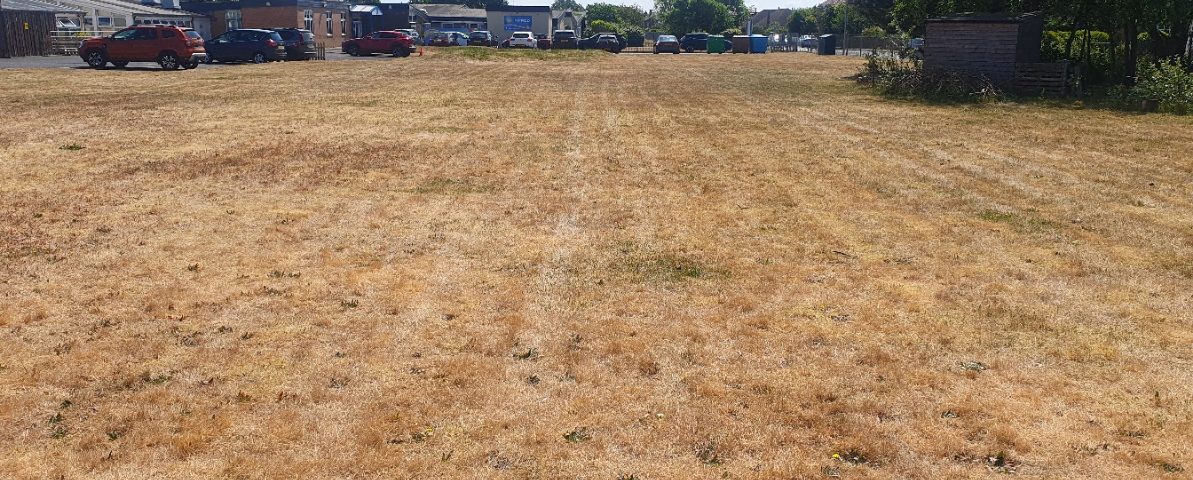
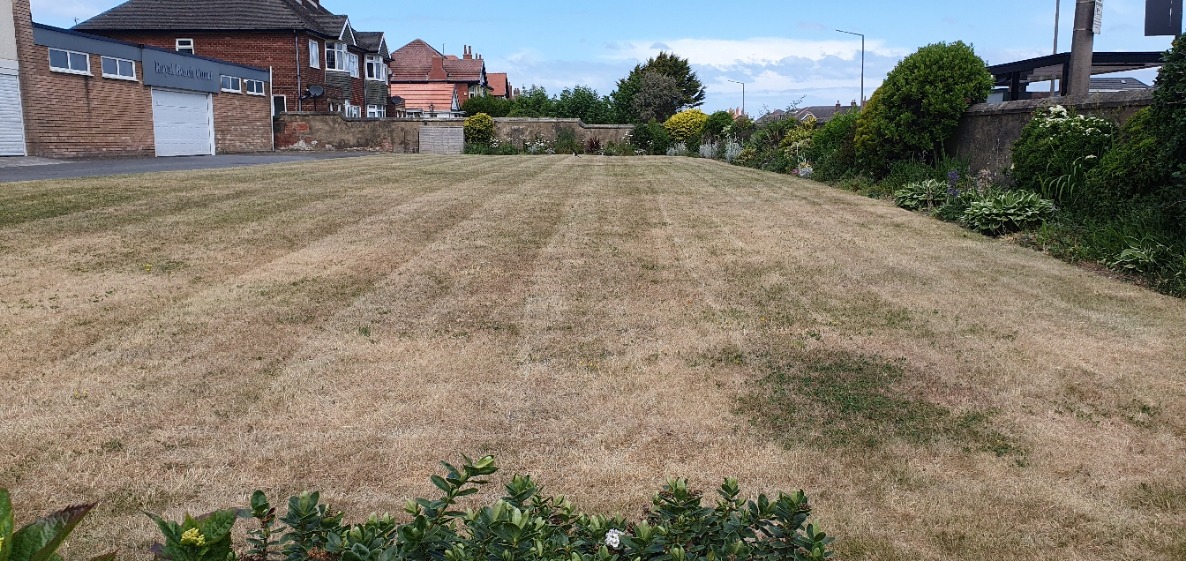
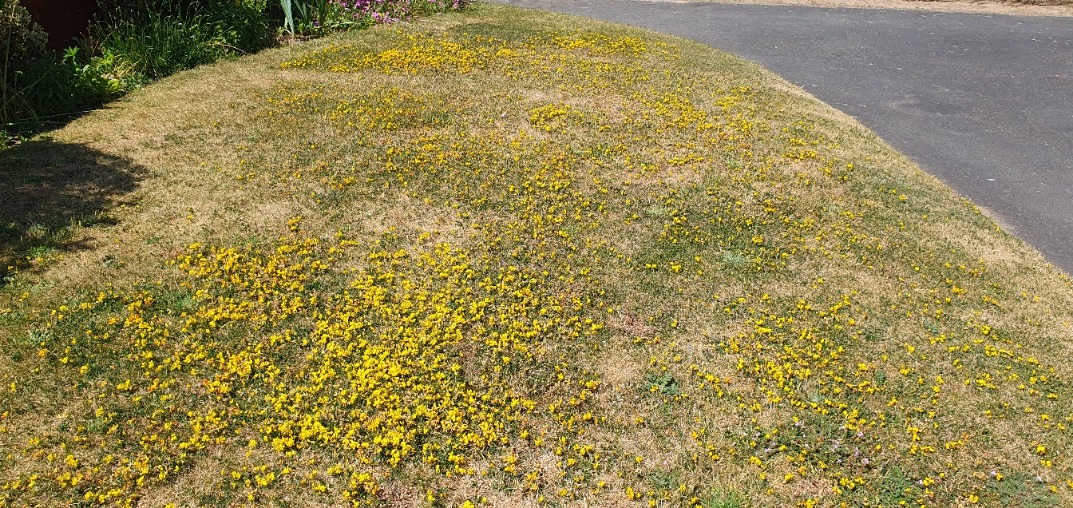
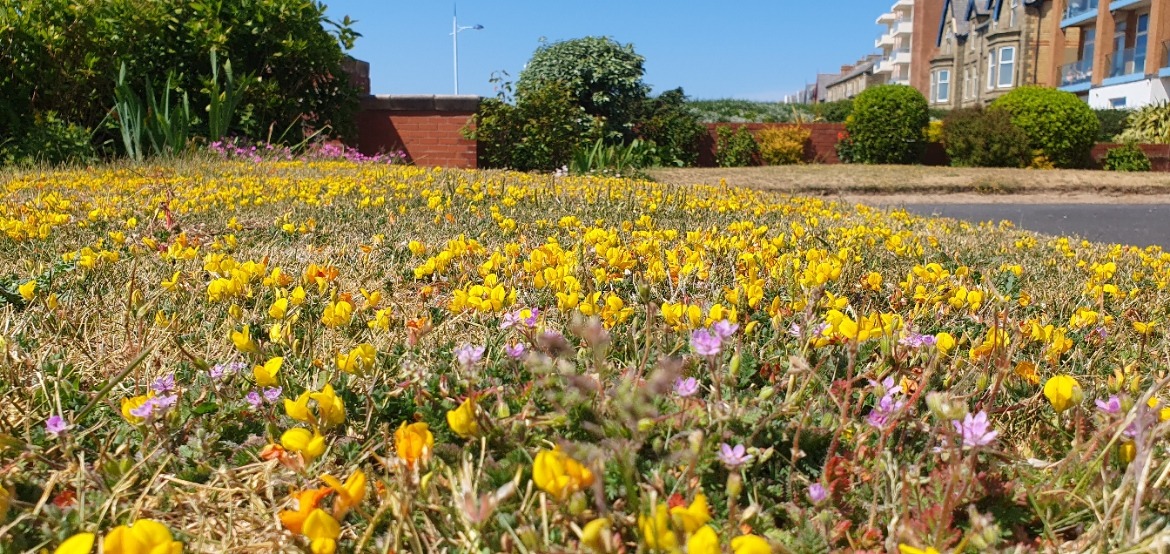
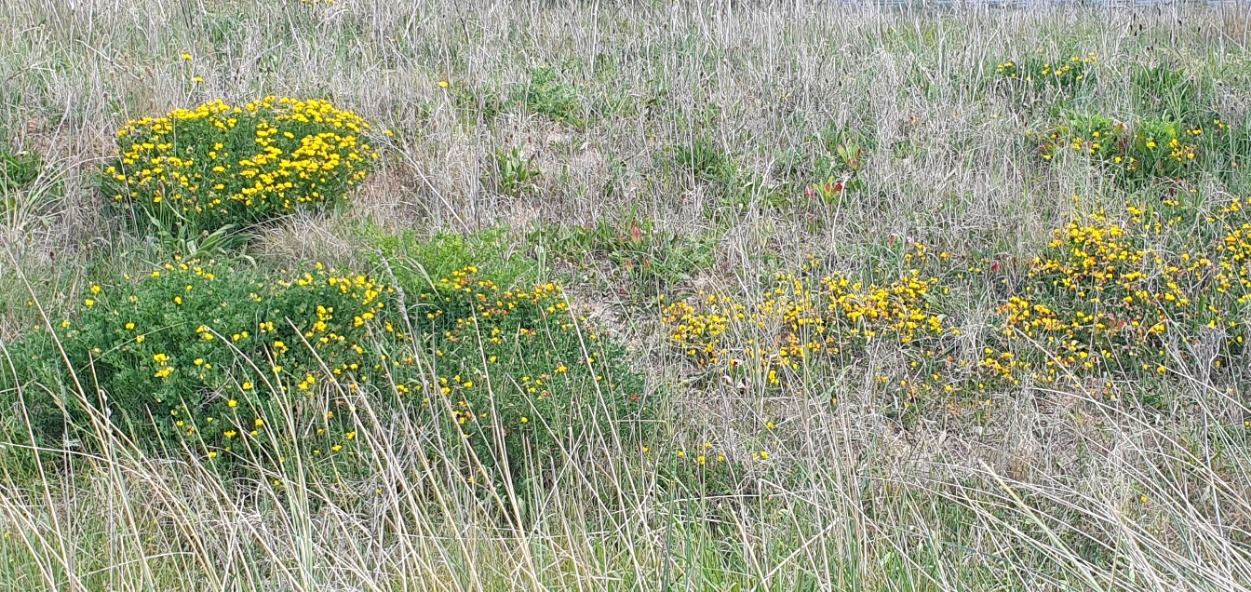
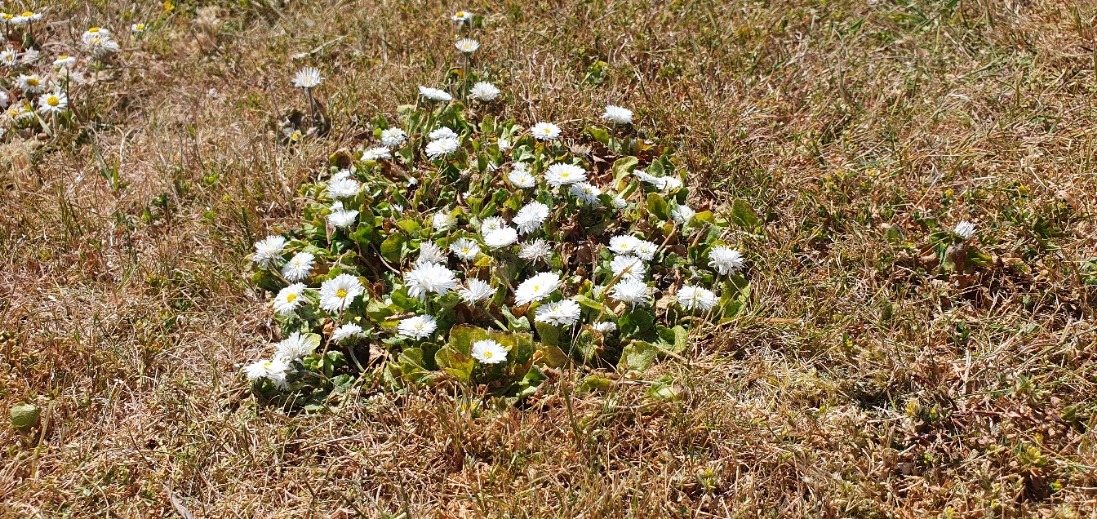
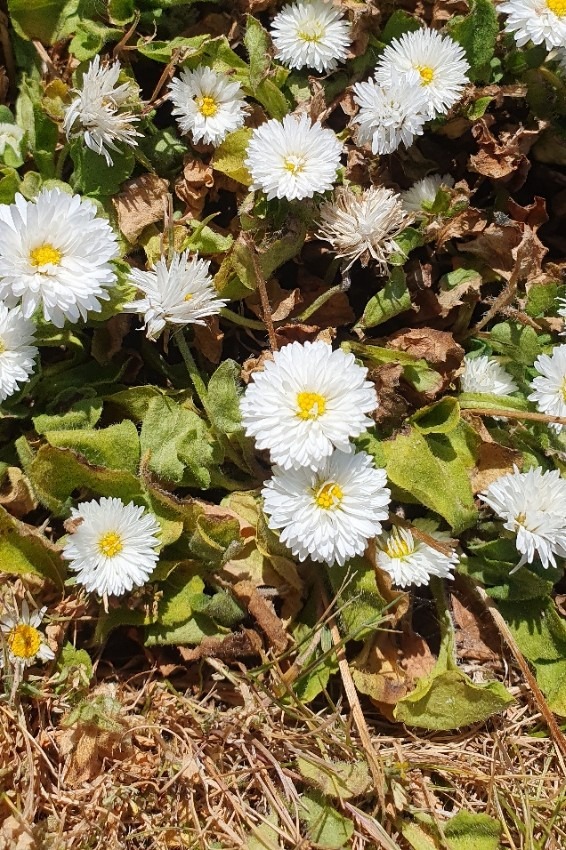
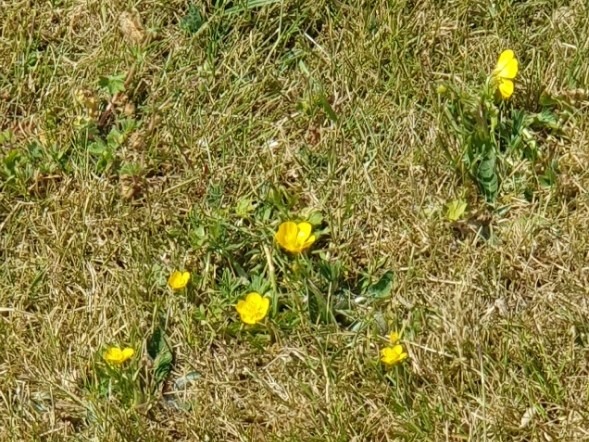
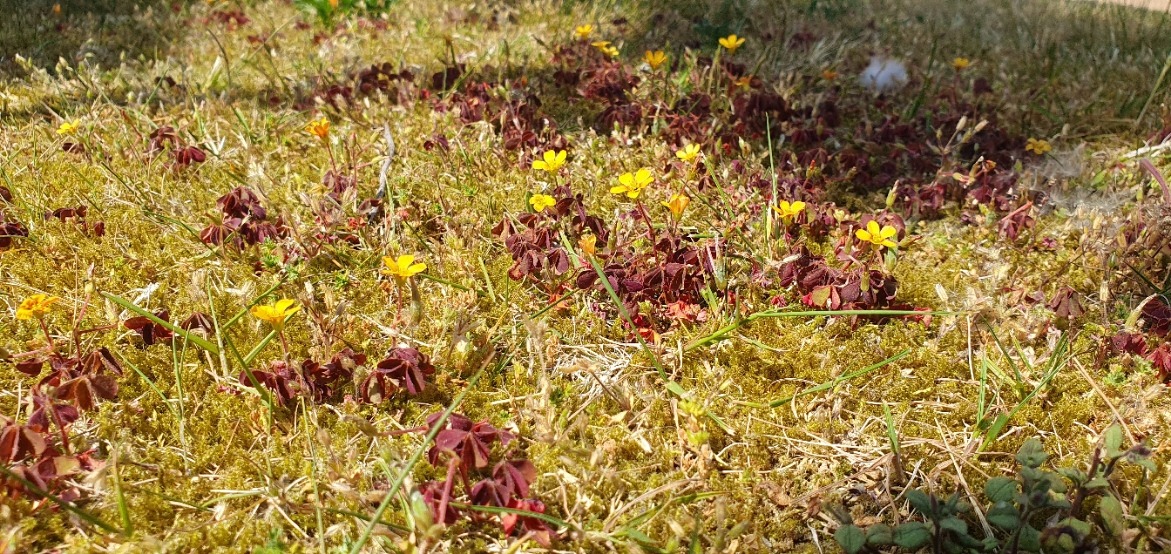
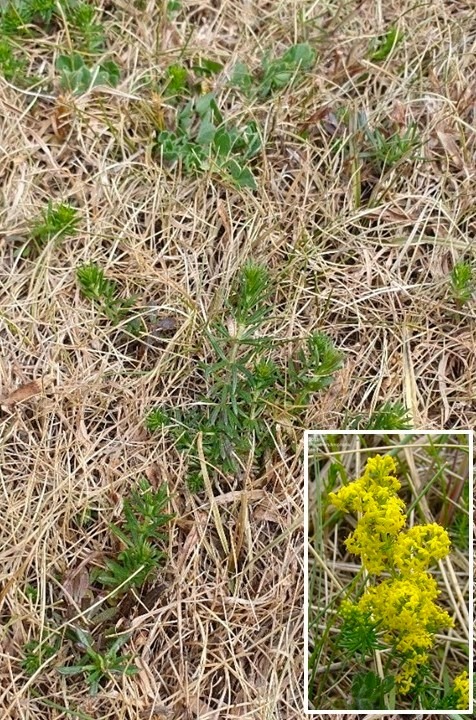
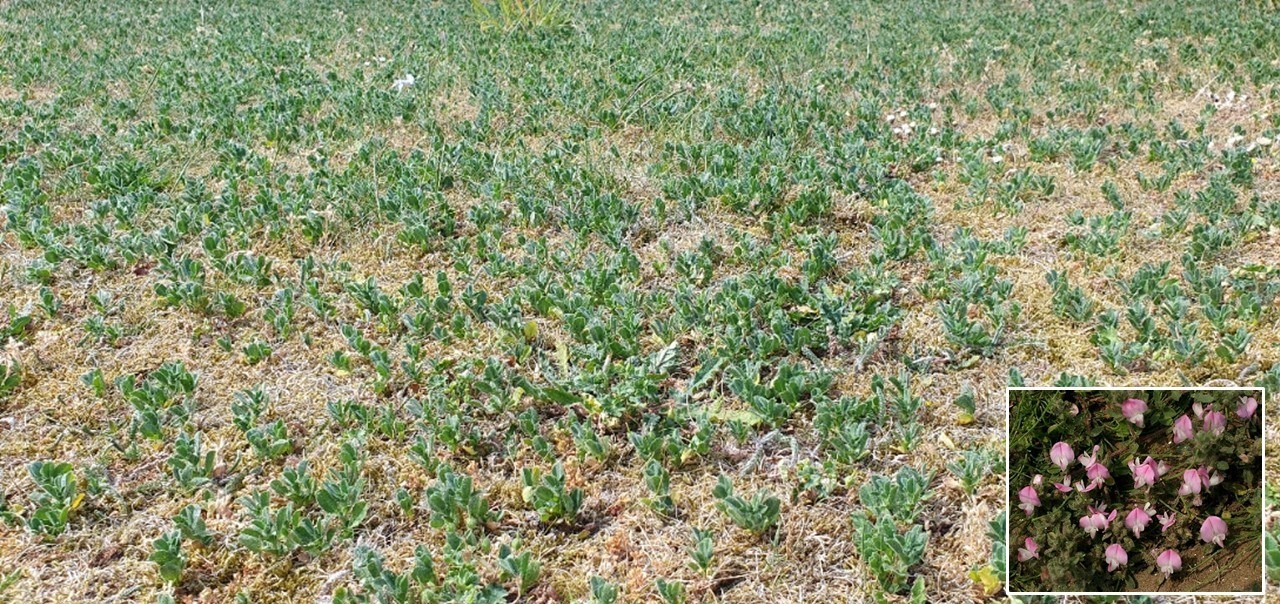
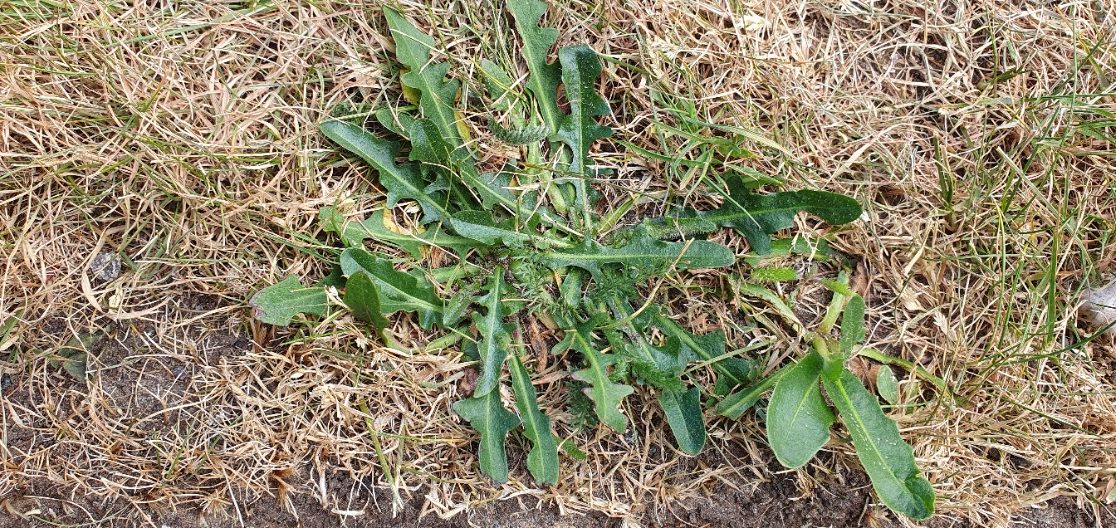
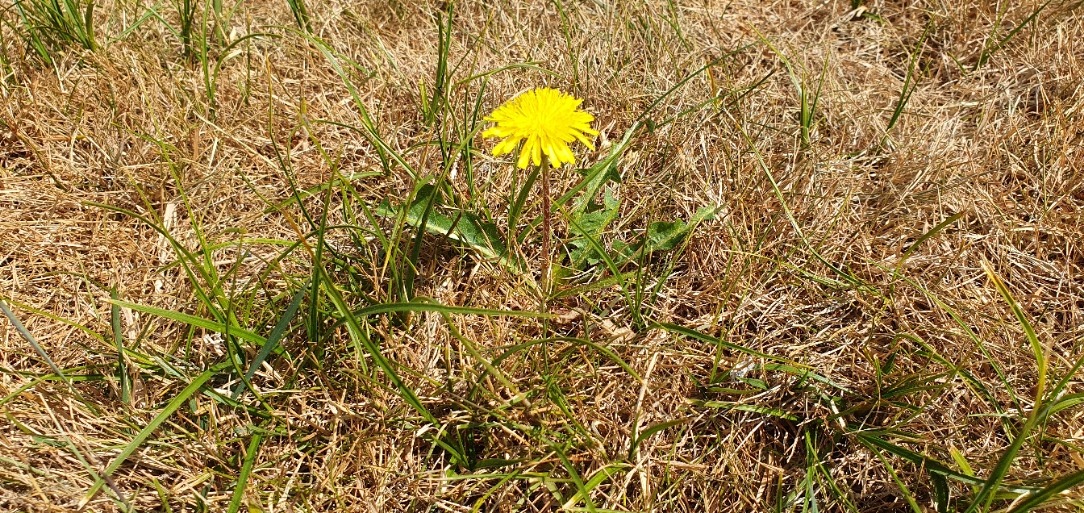
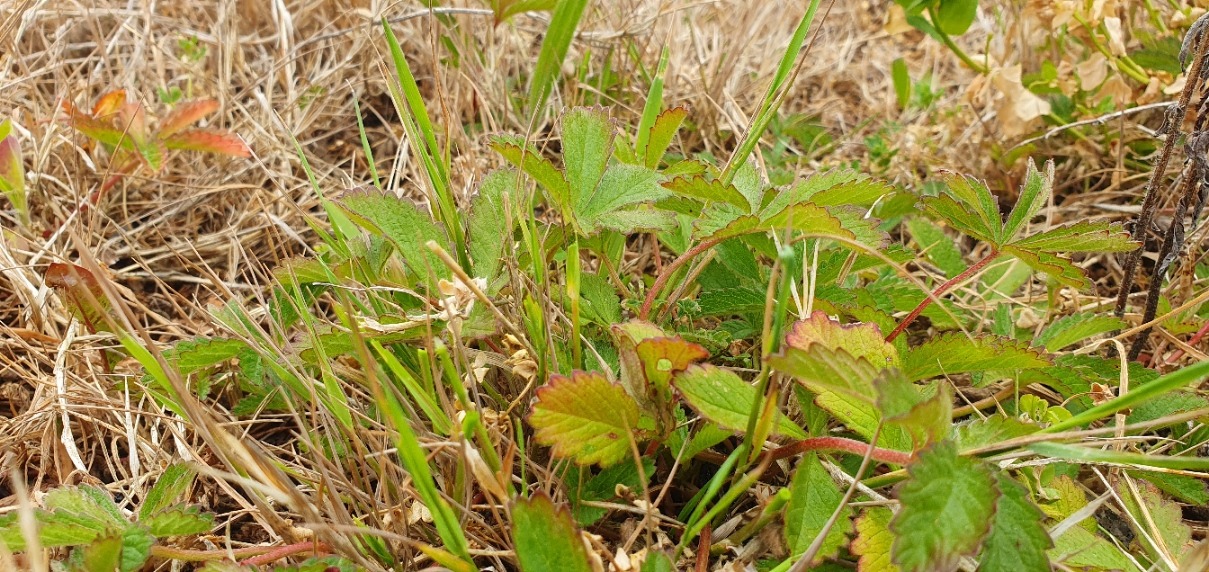
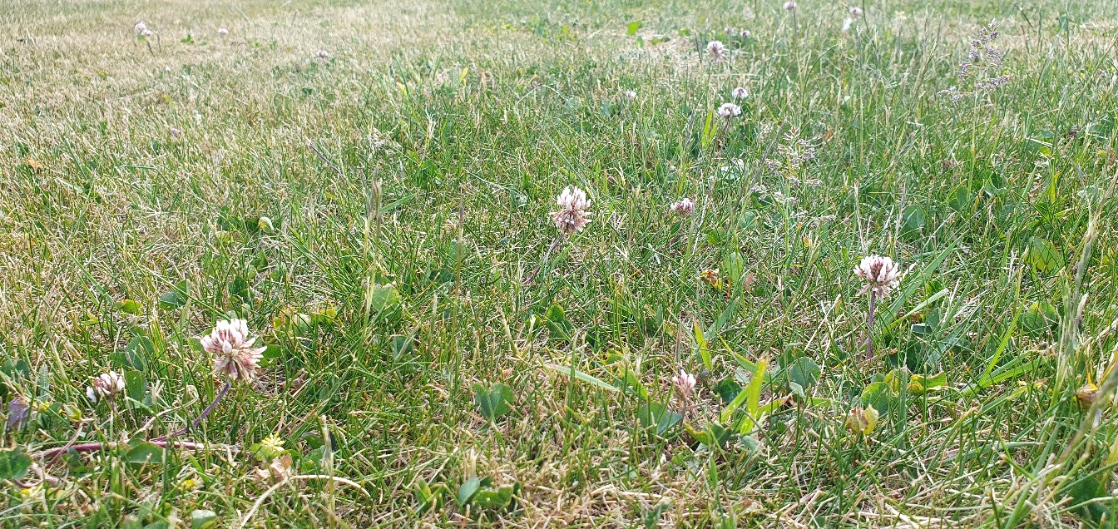
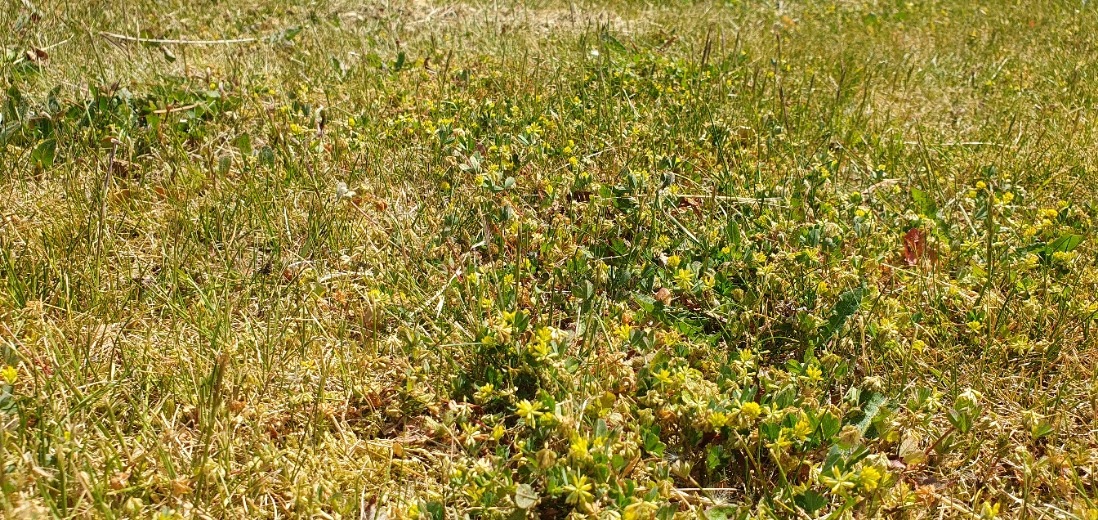
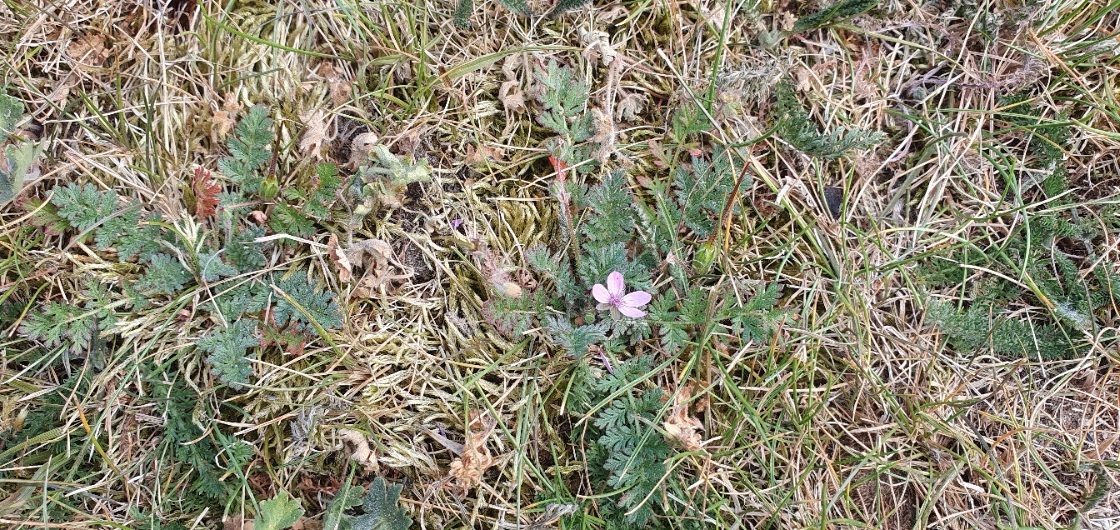
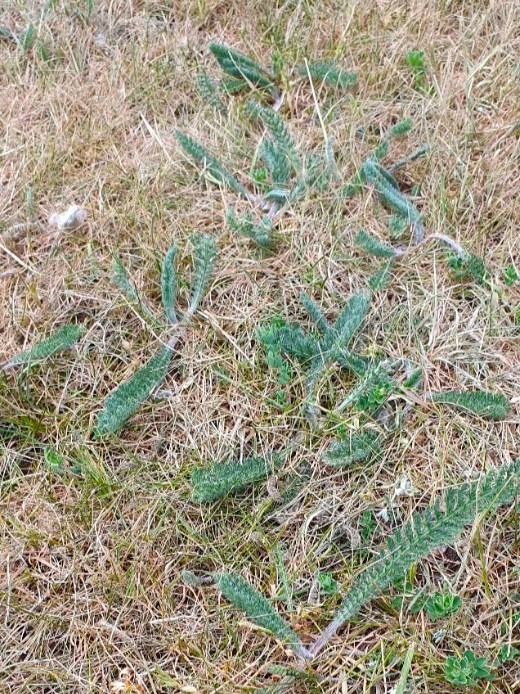
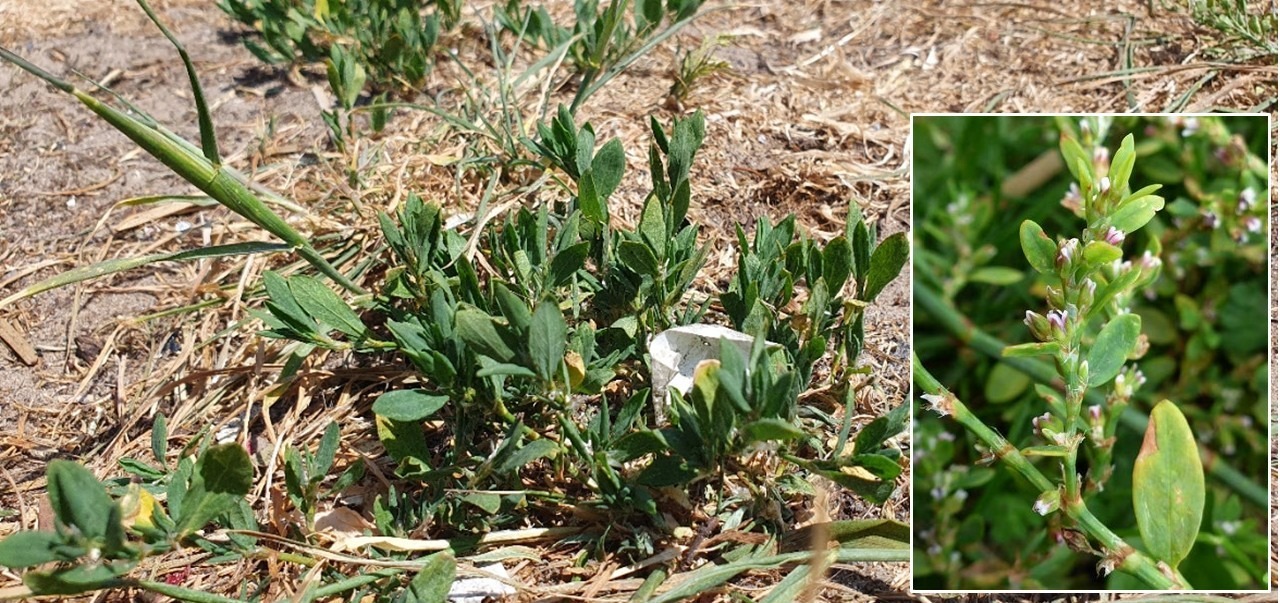
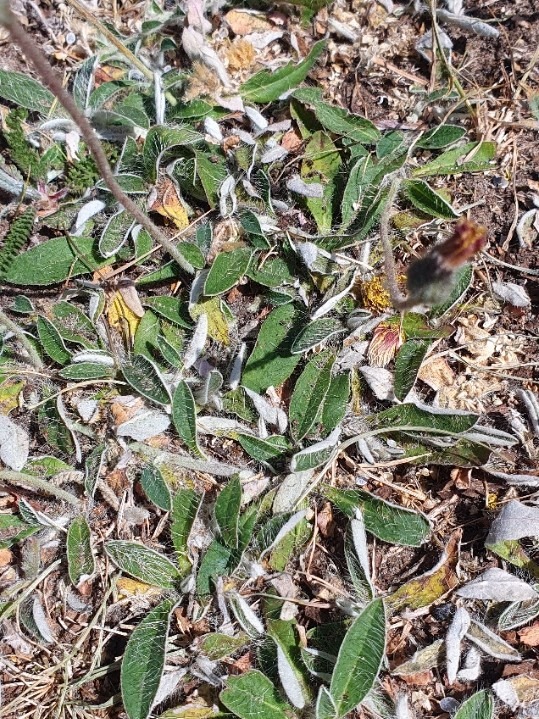
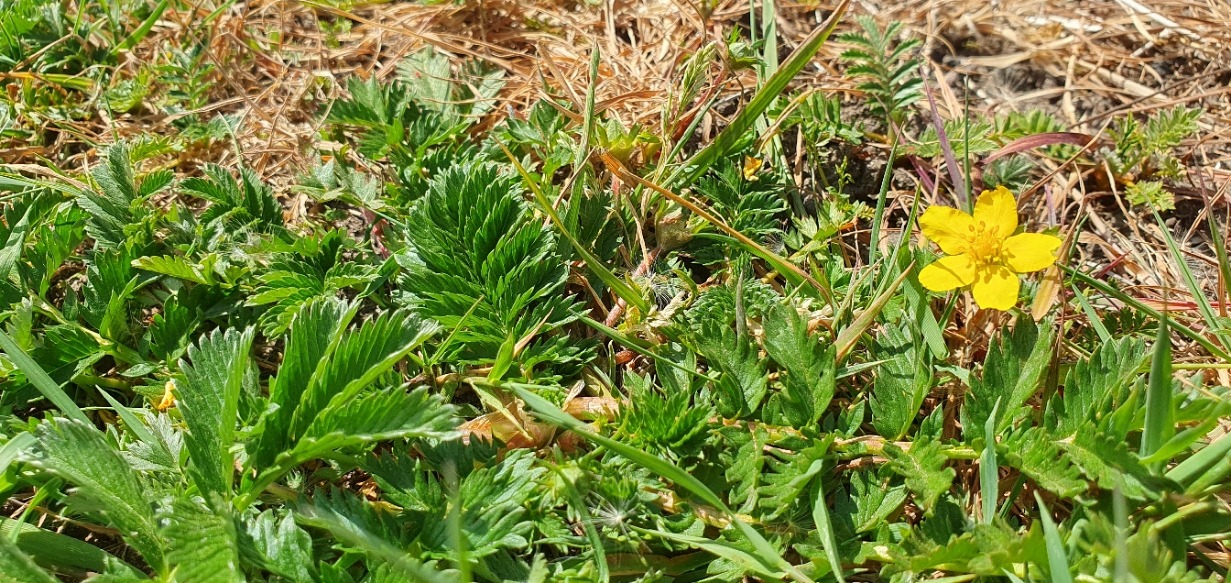
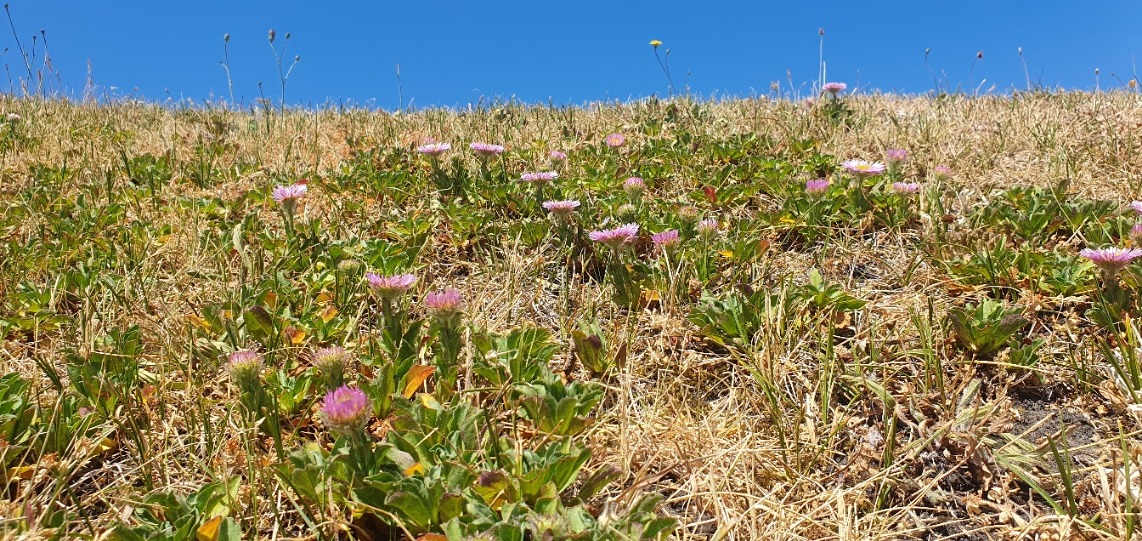
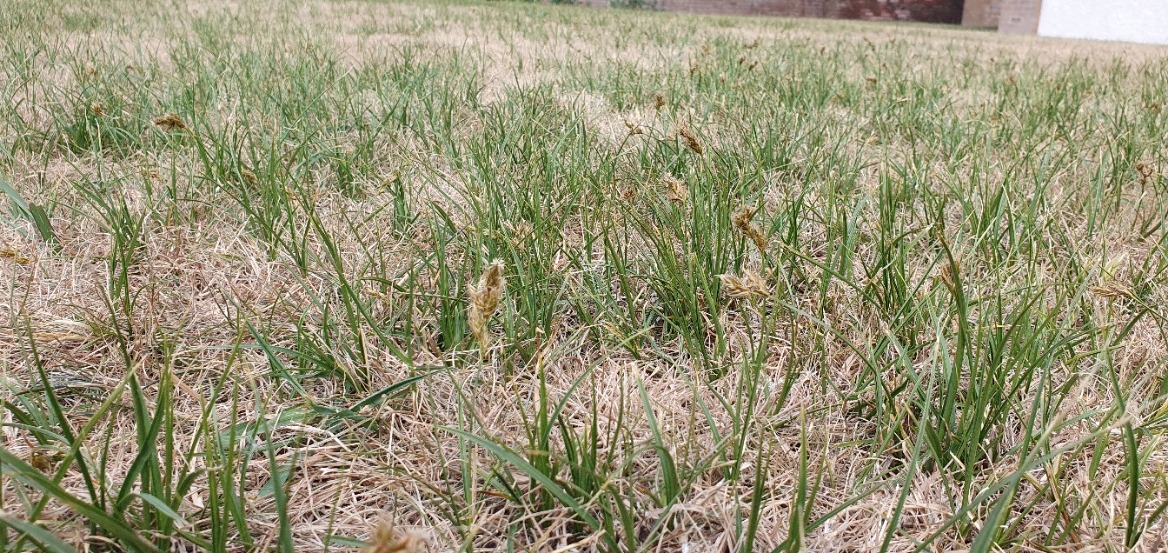
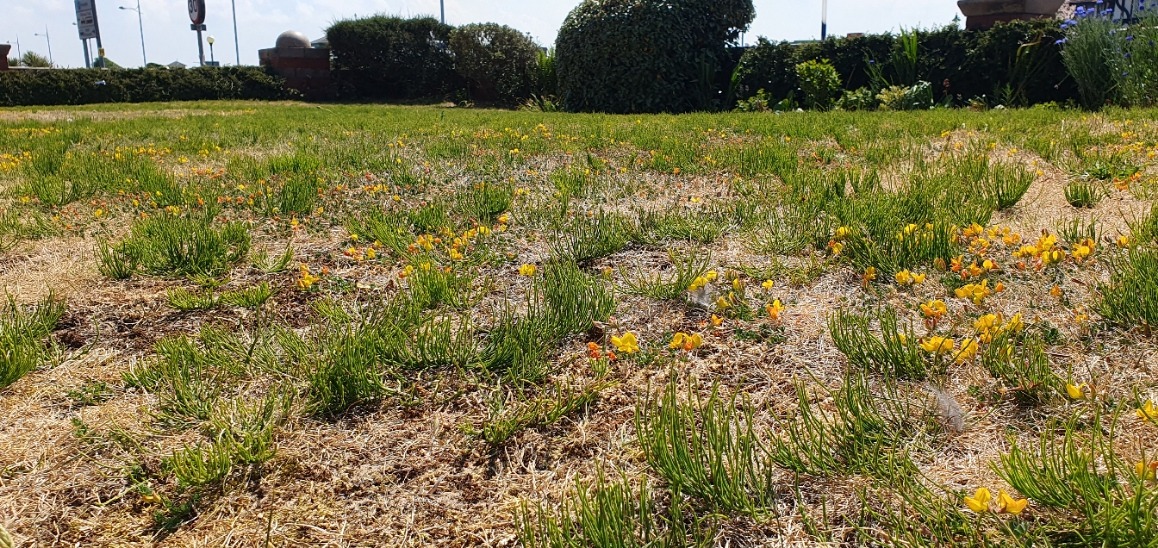

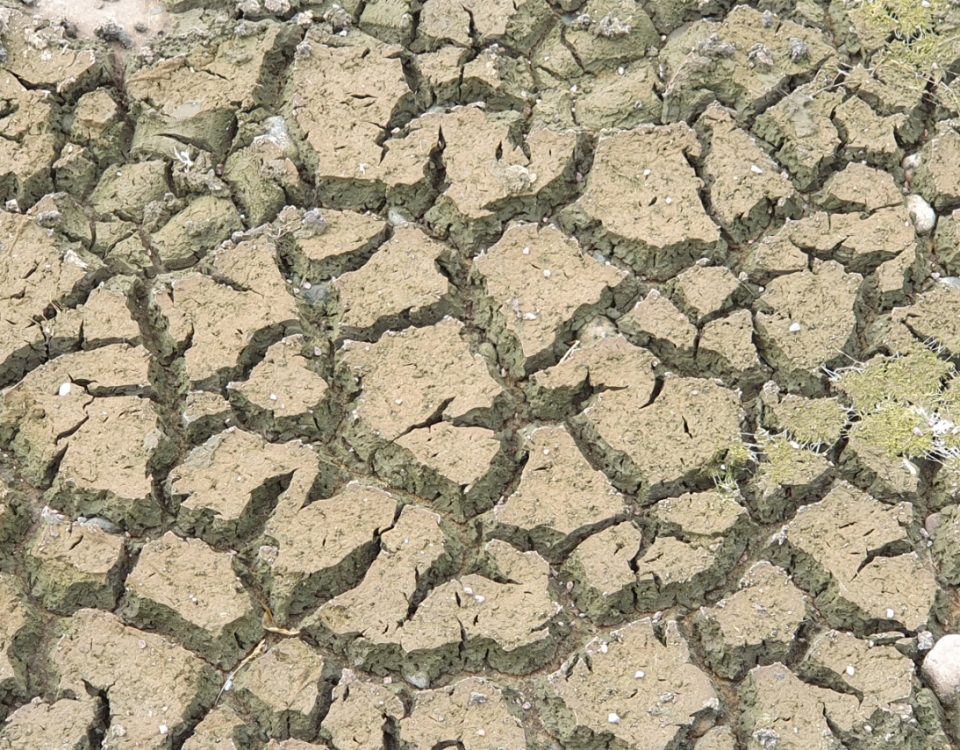
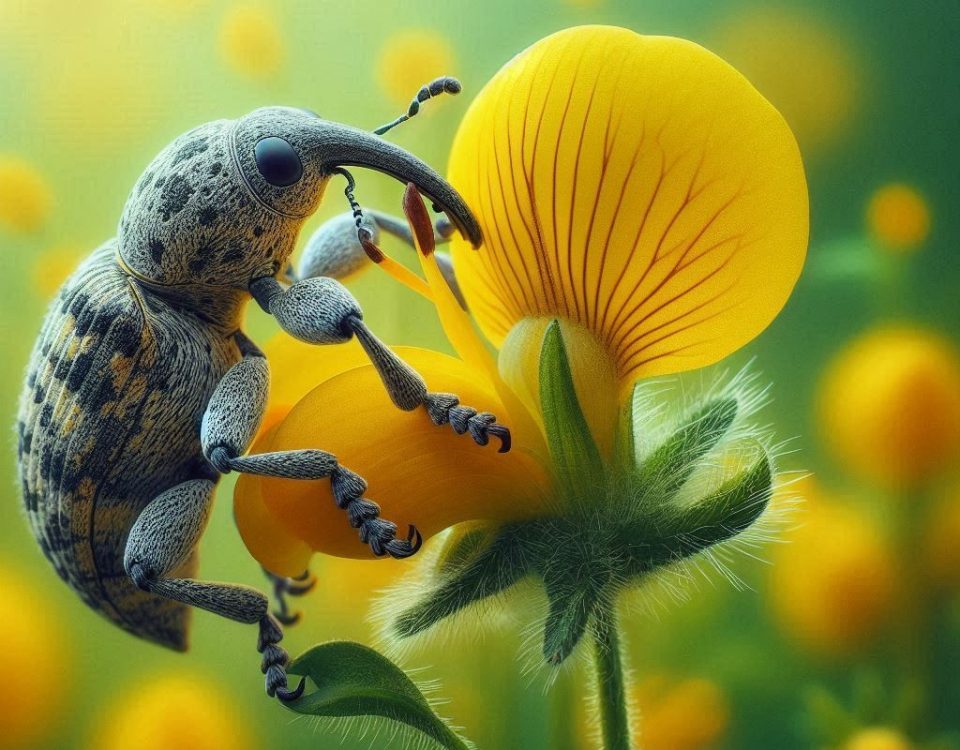

2 Comments
How are we to deal with climate change in the future with species choice? What species would you suggest would be good replacements for the more drought-prone species that are commonly cultivated?
Love the website!
A fine question, and one challenging to currently resolve with any certainty. Ongoing and increased climate variability in the UK is predicted. Roughly the same amount of rainfall overall, although with less consistent/regular timing and greater and more sudden intensities. Temperatures to widley fluctuate with an overall increasing trend.
The cultivated grass-only lawn is usually very species limited and most suited to a temperate and consistent climate. It exists best in a relatively narrow window of goldilocks conditions. Therefore it seems likely that the increased climate variability we are seeing will produce more root saturation and leaf browning events as its species tolerances are more frequently reached and exceeded. I posit that it is lawns with mixed species that have a wider variety of tolerances that will be more resilient overall, thus my call for an evolution in lawn composition and how we view lawns in general.